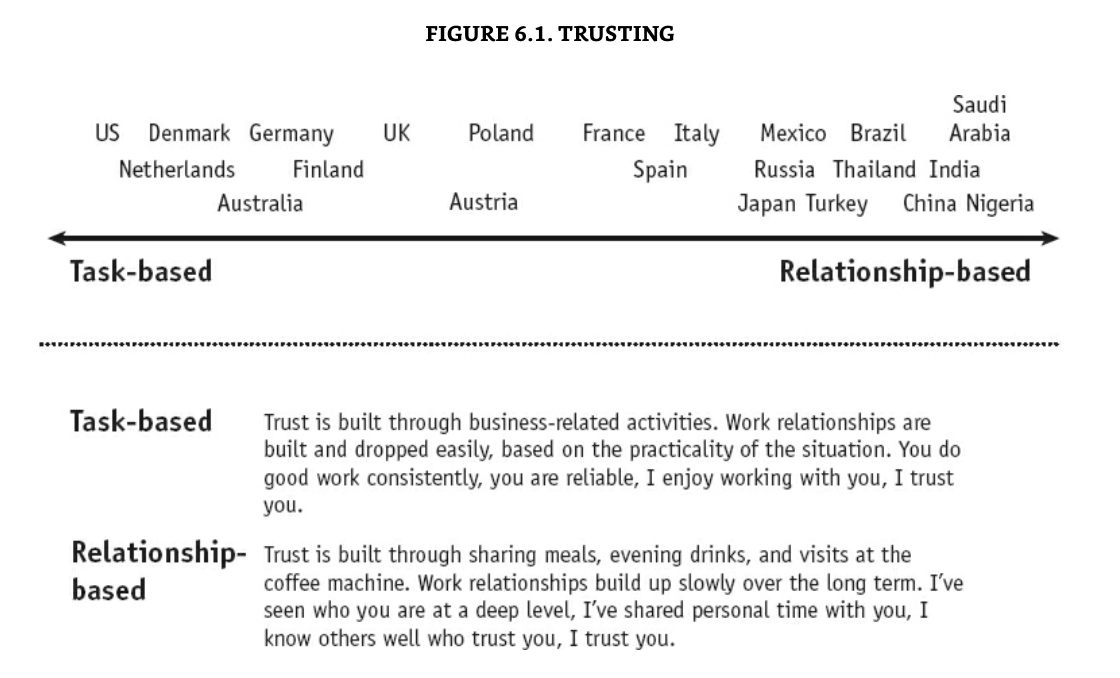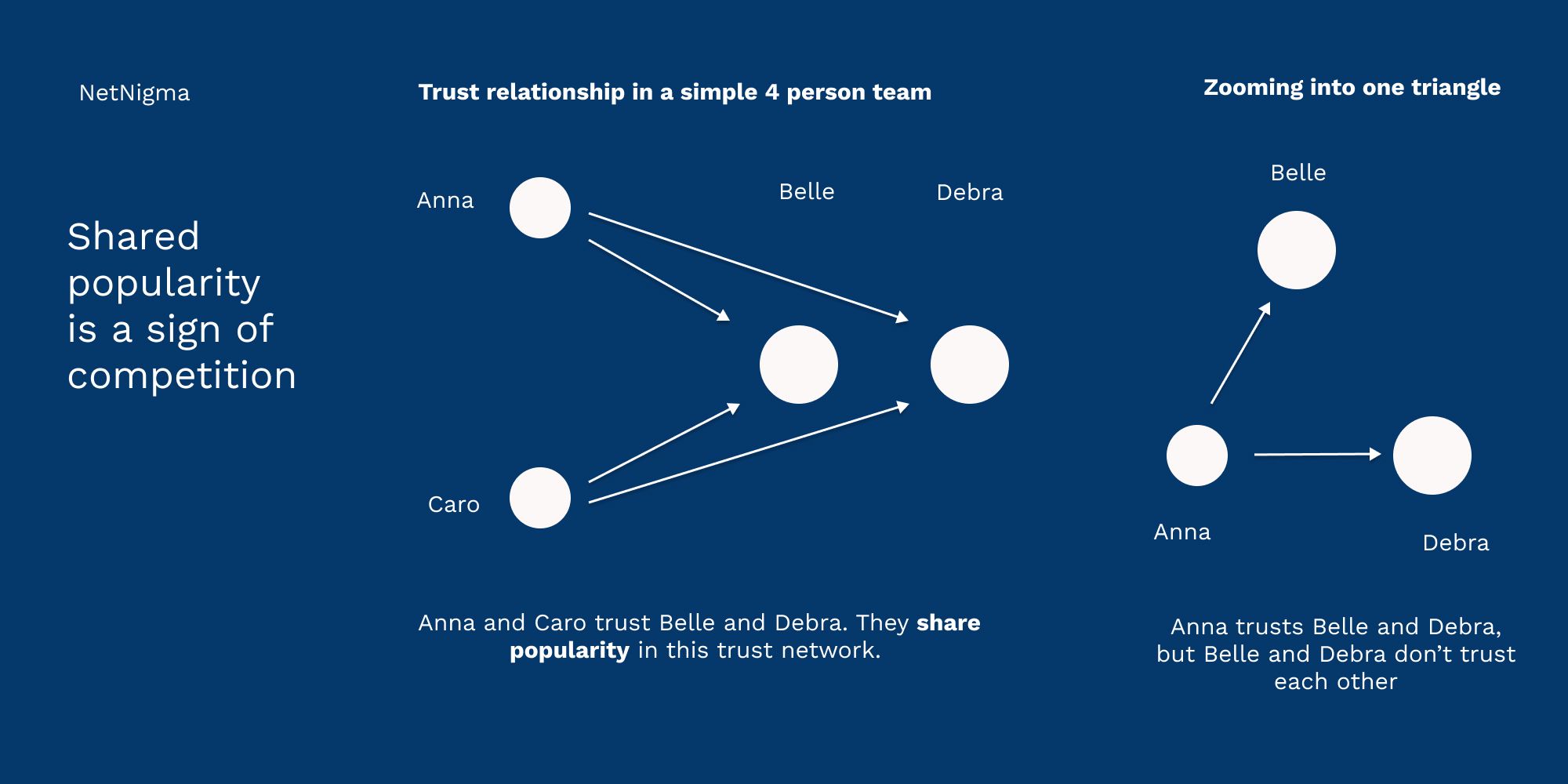Trust, open triangles and why it lowers performance
Trust matters, but it's nurtured differently across cultures: 🧠 and 💜 And that's the tricky part. Lack of trust, especially among top players, impacts what your team is able to achieve.
Erin Meyer writes in Culture Map that there are two extreme ways people build trust at work: Seeing your work (🧠-way) and getting to know you (💜-way).
In some cultures, people trust each other because the have seen you work. They have collected facts about you by observing how you behave at work and based on this build a trust perception. Accomplishment, productivity, and efficiency are the standards for building trust.
In other cultures, it's the opposite. People trust each other because they have spent time getting to know each other. They've talked about family, road trips, and what makes for a good coffee. Nothing gets done before people build a personal connections. Here the social relationship people form is the basis for great work to flourish.
The easiest way to figure out how the other person is building trust is by measuring how much time they spend on small talk: the longer it is, the more important personal connection is for trust building.

No one way is better than the other. But the trust that exists between people impacts what the group is able to accomplish. And this is the tricky part for those working across cultures. Two people not forming a trusting relationship because of their opposite style can drag the team down or slowly destroy a community.
A bit of science
Here are a couple of science facts about trust and its impact on performance. The research was done in three Australian Football teams. As a general disclaimer for any science-based evidence: Context matters.
Fact 1: Trust relationships will be reciprocated. If I trust you, chances are high you will trust me. Just look at your personal life. You don't hang out with people you don't trust. It's a very short-lived relationship if trust is missing.
Fact 2: Trust isn't dished out liberally to everyone who crosses your path, but follows hierarchical structures. We more likely trust those who perform at a high level or have more experience than us. And we are more likely to trust those at our performance or experience level. That means that hierarchy matters.
Fact 3: If high performers in a team do not trust each other, this has negative consequences for team performance. A lack of trust doesn't mean outright visible discontent for each other. More often it's more subtle. In a social network map this lack of trust between high performance is clearly visible through open triangles.

When Anna and Caro trust Belle and Debra (both high performers or very experienced) but Belle and Debra do not trust each other, you get an open triangle. This is problematic in a team as people are aware of the relationships between others. We develop cognitive social structures about our team members and the relationship between them. We can sense tension between people, and this tension will harm the team.
Trust, Teams and Triangles
Going back to the starting point of different cultures and building trust. We've seen that the basis for trusting another person isn't the same for everyone (🧠 vs 💜), and that a lack of trust, especially between "top players", lowers the impact your team has.
One way out of this dilemma is to acknowledge that trust is build differently and create personal handbooks. In these Manual of Me include personal information that talks to the 💜-trust-builders and work information, addressing the 🧠-trust-builders.
Ignoring the differences isn't going to work, pushing one approach off the table as inefficient is going to alienate part of your team/culture (and stinks of supremacy). Acknowledging and providing input for both trust-building-approaches is more time consuming but has greater long-term impact.
And you never know, you might learn a thing or two about others you would have never known if you sticked to your "tried and tested" approach.
What about using trust-networks?
After all NetNigma is all about networks and social graphs. Why wouldn't I outright suggest this method? Collecting data to create a trust network, a map showing who trust whom, should not be done in a light hearted way.
This type of exercise can cut very deep into the team's history. This is because you'll be asking everyone to state who they trust in the team and create a network diagram. Then you'll discuss this diagram with your team to figure out what has let to trust centers (team members trusted by many) and trust black holes (team members not trusted by many).
A way to ease the team into thinking about trust networks is to make it an individual, professional development exercise. Instead of creating a team map, create an individual map. Everyone for themselves draws who they think is trusted by whom, and elaborates on the network map with a coach. Doing it in this way, get's the ball rolling. People will start thinking about how trust impacts the team, while remaining safe.
Do more, dive deep
Erin Meyer, Culture Map. This is excellent and a must read if you work with people from different cultures.
Manual of Me. Create your own personal handbook by answering prompts.